-
 bitcoin
bitcoin $122090.672462 USD
1.59% -
 ethereum
ethereum $4493.758974 USD
0.56% -
 xrp
xrp $3.033145 USD
0.65% -
 tether
tether $1.000629 USD
0.00% -
 bnb
bnb $1169.854250 USD
7.07% -
 solana
solana $230.954786 USD
-0.19% -
 usd-coin
usd-coin $0.999785 USD
0.00% -
 dogecoin
dogecoin $0.256108 USD
-1.12% -
 tron
tron $0.342333 USD
-0.12% -
 cardano
cardano $0.859632 USD
-0.10% -
 hyperliquid
hyperliquid $48.932146 USD
-2.25% -
 chainlink
chainlink $22.345466 USD
-1.29% -
 ethena-usde
ethena-usde $1.000217 USD
-0.03% -
 avalanche
avalanche $31.203456 USD
1.93% -
 sui
sui $3.579145 USD
1.05%
How do decentralized exchanges (DEX) in DeFi work?
DEXs, cornerstones of DeFi, use blockchain smart contracts for peer-to-peer crypto trading, eliminating intermediaries. Users provide liquidity via pools, earning fees, but must understand gas fees and slippage inherent in various DEX architectures.
Mar 22, 2025 at 01:01 pm
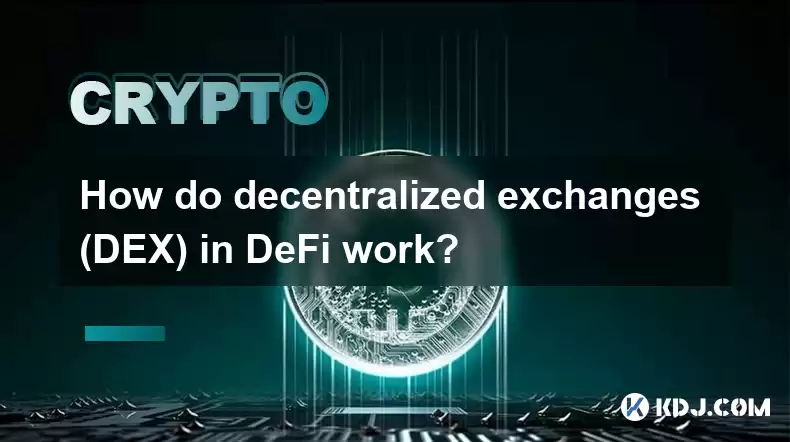
- Decentralized Exchanges (DEXs) operate without a central authority, unlike centralized exchanges (CEXs).
- DEXs utilize smart contracts on blockchain networks to facilitate trades.
- Liquidity is provided by users, often through liquidity pools.
- Different DEX architectures exist, each with trade-offs in speed, security, and fees.
- Understanding gas fees and slippage is crucial for using DEXs effectively.
Decentralized exchanges (DEXs) are a cornerstone of decentralized finance (DeFi), offering a peer-to-peer trading platform for cryptocurrencies without the need for intermediaries like traditional exchanges. This decentralized nature enhances security and privacy, as user funds are never held by a central entity vulnerable to hacking or regulatory seizures. Instead, transactions are executed directly between users via smart contracts deployed on a blockchain.
The core functionality of a DEX revolves around smart contracts. These self-executing contracts automatically execute the terms of an agreement once predefined conditions are met. In the context of DEXs, these contracts manage the trading process, ensuring the exchange of tokens according to the agreed-upon price and quantity. This eliminates the need for trusted third parties to oversee transactions.
One of the key mechanisms that powers many DEXs is the Automated Market Maker (AMM). AMMs utilize liquidity pools – collections of tokens locked in smart contracts – to facilitate trades. Users provide liquidity to these pools, earning trading fees as a reward. When a user wants to trade, they interact with the smart contract, swapping tokens from the pool at a price determined by the ratio of tokens within the pool. The price fluctuates based on supply and demand within the pool itself.
Different types of DEX architectures exist. Some, like Uniswap, employ the AMM model described above. Others, such as those based on order books, function more similarly to centralized exchanges but still operate on a decentralized blockchain. Each architecture has its own advantages and disadvantages regarding speed, security, and transaction fees. For instance, AMMs generally offer faster transactions but may experience slippage (the difference between the expected and actual trade price).
Understanding gas fees is essential when using DEXs. Gas fees are transaction fees paid to miners or validators on the blockchain to process transactions. The amount of gas required and, consequently, the fee, varies depending on network congestion and the complexity of the transaction. High gas fees can make trading on certain DEXs expensive, especially during periods of high network activity.
Slippage is another crucial aspect to consider. Slippage occurs when the actual price at which a trade is executed differs from the initially displayed price. This can happen due to changes in the liquidity pool's balance during the transaction execution time, particularly for larger trades. Understanding slippage and its potential impact is crucial for managing risk.
Various DEX Architectures:- Automated Market Makers (AMMs): These are the most common type of DEX, using liquidity pools to facilitate trades. They are generally faster but can be subject to slippage.
- Order Book DEXs: These operate similarly to centralized exchanges, matching buy and sell orders. They often offer better price execution but can be slower than AMMs.
- Hybrid DEXs: Some DEXs combine aspects of AMMs and order book models to try to leverage the advantages of both.
Providing liquidity to a DEX involves depositing tokens into a liquidity pool. In return, liquidity providers (LPs) earn trading fees proportional to their share of the pool. However, it's important to understand the risks involved, such as impermanent loss, which can occur if the price of the tokens in the pool changes significantly.
Choosing the Right DEX:The best DEX for you depends on your specific needs and preferences. Consider factors like the supported tokens, trading fees, speed, user interface, security, and the type of DEX architecture. Research different platforms and read reviews before committing your funds.
Frequently Asked Questions:Q: Are DEXs safer than CEXs?A: DEXs are generally considered safer than CEXs due to the absence of a central point of failure. However, smart contract vulnerabilities remain a risk. Thorough research and due diligence are crucial.
Q: What are gas fees, and how do they affect DEX trading?A: Gas fees are transaction fees on the blockchain. High gas fees can make DEX trading expensive, especially during network congestion.
Q: What is slippage, and how can I minimize it?A: Slippage is the difference between the expected and actual trade price. It can be minimized by using limit orders or trading smaller amounts.
Q: What is impermanent loss?A: Impermanent loss is the potential loss incurred by liquidity providers when the price of tokens in a liquidity pool changes significantly.
Q: How do I choose the right DEX?A: Consider factors like supported tokens, fees, speed, user interface, security, and DEX architecture. Research different platforms before choosing one.
Q: What are the benefits of using a DEX?A: Benefits include increased security and privacy due to decentralization, no KYC/AML requirements (though this can vary depending on jurisdiction and DEX), and often lower fees compared to CEXs, although this is not always the case.
Q: What are the drawbacks of using a DEX?A: Drawbacks can include higher gas fees, potential for slippage, complexity for novice users, and less liquidity compared to some CEXs. Smart contract risks also persist.
Disclaimer:info@kdj.com
The information provided is not trading advice. kdj.com does not assume any responsibility for any investments made based on the information provided in this article. Cryptocurrencies are highly volatile and it is highly recommended that you invest with caution after thorough research!
If you believe that the content used on this website infringes your copyright, please contact us immediately (info@kdj.com) and we will delete it promptly.
- BlockDAG, DOGE, HYPE Sponsorship: Crypto Trends Shaping 2025
- 2025-10-01 00:25:13
- Deutsche Börse and Circle: A StableCoin Adoption Powerhouse in Europe
- 2025-10-01 00:25:13
- BlockDAG's Presale Buzz: Is It the Crypto to Watch in October 2025?
- 2025-10-01 00:30:13
- Bitcoin, Crypto, and IQ: When Genius Meets Digital Gold?
- 2025-10-01 00:30:13
- Stablecoins, American Innovation, and Wallet Tokens: The Next Frontier
- 2025-10-01 00:35:12
- NBU, Coins, and Crypto in Ukraine: A New Yorker's Take
- 2025-10-01 00:45:14
Related knowledge

How to track DeFi activity on a block explorer
Sep 04,2025 at 05:36pm
Bitcoin's Role in Decentralized Finance1. Bitcoin remains the cornerstone of the cryptocurrency ecosystem, serving as both a store of value and a benc...
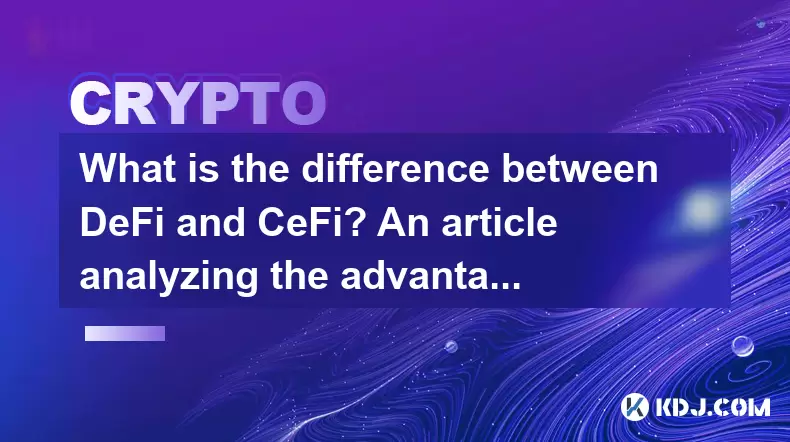
What is the difference between DeFi and CeFi? An article analyzing the advantages and disadvantages of both
Jun 13,2025 at 03:57am
Understanding the Foundations of DeFi and CeFiTo fully grasp the difference between DeFi (Decentralized Finance) and CeFi (Centralized Finance), it’s ...
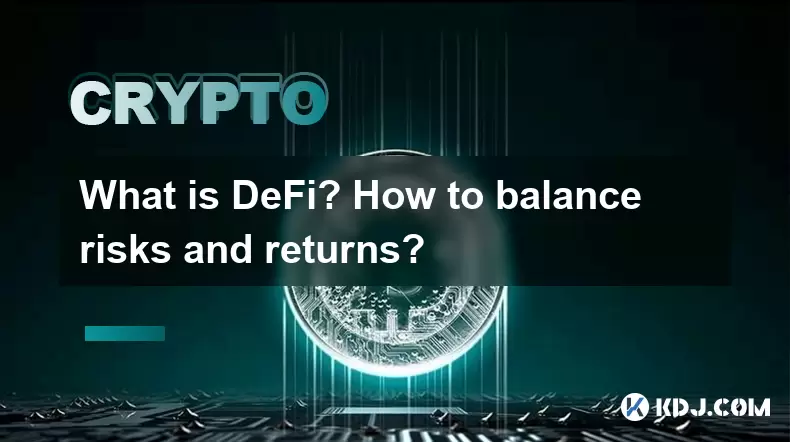
What is DeFi? How to balance risks and returns?
May 31,2025 at 12:22pm
What is DeFi? How to Balance Risks and Returns? Decentralized Finance, commonly known as DeFi, represents a revolutionary shift in the financial ecosy...
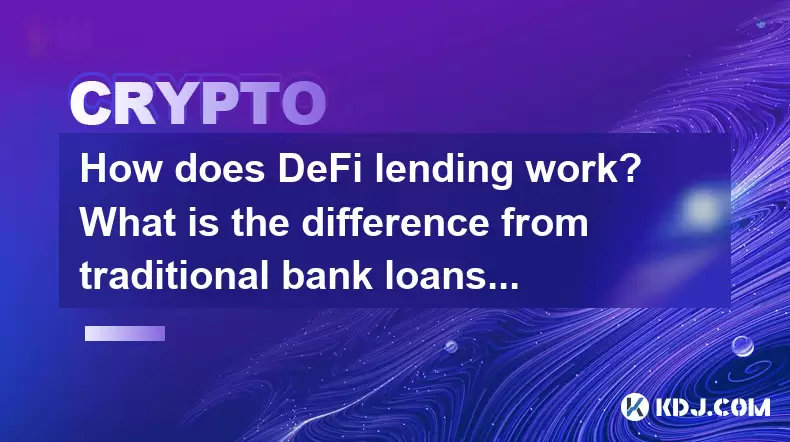
How does DeFi lending work? What is the difference from traditional bank loans?
May 29,2025 at 05:36pm
Introduction to DeFi LendingDeFi lending, or decentralized finance lending, represents a revolutionary shift in the way borrowing and lending are cond...
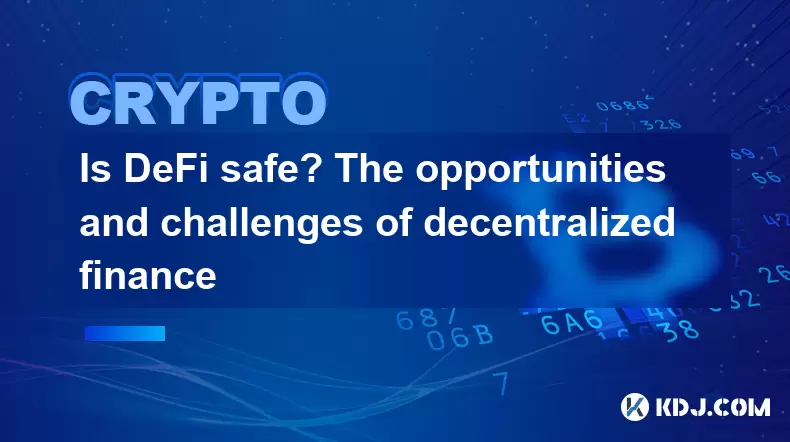
Is DeFi safe? The opportunities and challenges of decentralized finance
May 27,2025 at 02:28pm
Decentralized Finance, commonly known as DeFi, has revolutionized the financial landscape by offering a range of financial services without the need f...

DeFi Mining Tutorial: How to Maximize Profits and Reduce Risks?
May 27,2025 at 07:42am
DeFi, or Decentralized Finance, has opened up a new world of opportunities for crypto enthusiasts looking to maximize their profits through various mi...

How to track DeFi activity on a block explorer
Sep 04,2025 at 05:36pm
Bitcoin's Role in Decentralized Finance1. Bitcoin remains the cornerstone of the cryptocurrency ecosystem, serving as both a store of value and a benc...

What is the difference between DeFi and CeFi? An article analyzing the advantages and disadvantages of both
Jun 13,2025 at 03:57am
Understanding the Foundations of DeFi and CeFiTo fully grasp the difference between DeFi (Decentralized Finance) and CeFi (Centralized Finance), it’s ...

What is DeFi? How to balance risks and returns?
May 31,2025 at 12:22pm
What is DeFi? How to Balance Risks and Returns? Decentralized Finance, commonly known as DeFi, represents a revolutionary shift in the financial ecosy...

How does DeFi lending work? What is the difference from traditional bank loans?
May 29,2025 at 05:36pm
Introduction to DeFi LendingDeFi lending, or decentralized finance lending, represents a revolutionary shift in the way borrowing and lending are cond...

Is DeFi safe? The opportunities and challenges of decentralized finance
May 27,2025 at 02:28pm
Decentralized Finance, commonly known as DeFi, has revolutionized the financial landscape by offering a range of financial services without the need f...

DeFi Mining Tutorial: How to Maximize Profits and Reduce Risks?
May 27,2025 at 07:42am
DeFi, or Decentralized Finance, has opened up a new world of opportunities for crypto enthusiasts looking to maximize their profits through various mi...
See all articles










































































